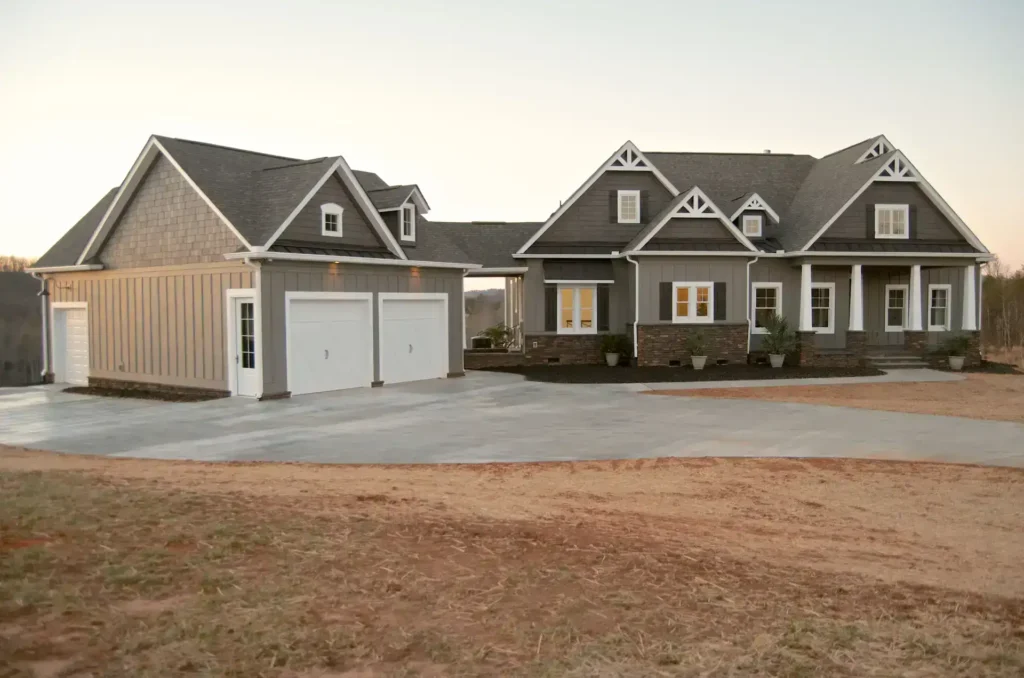A drop ceiling serves as the secondary ceiling structure beneath the primary one and the construction industry calls it a suspended or acoustic ceiling. Industrial businesses together with offices and homeowners, frequently choose this ceiling system structure for multiple different operational purposes. Drop ceilings work well as a solution to meet different needs which range from pipe concealment to acoustic control and visual improvement of your space. What expenses are associated with putting in a ceiling system that hangs from the main level? This piece examines drop ceiling installation costs along with all the important elements which determine price values.

The expenses for installing drop ceilings depend on four key elements – room dimensions along with floor covering selection and installation difficulty level combined with supplementary lighting components. The overall expenses for drop ceiling installation range between $955 and $1,510 per project. This article reveals all cost-related factors while providing general expectations about home and office transformation expenses.
Average Cost of Installing a Drop Ceiling
Various elements determine the installation expenses of a drop ceiling system. Homeowners need to allocate $955 to $1,510 to install drop ceilings for a 130-square-foot space. Your drop ceiling installation expenses will move upward or downward based on what materials you select and both worker costs and installation work complexity.
A summary of price estimates occurs through the following table according to room dimensions.
| Room Size (sq. ft.) | Low End ($) | High End ($) |
| 70 sq. ft. | 654.50 | 899 |
| 100 sq. ft. | 935 | 1,410 |
| 130 sq. ft. | 1,215.50 | 1,494 |
| 160 sq. ft. | 1,496 | 2,300 |
| 220 sq. ft. | 2,057 | 2,700 |
Low-End vs. High-End Costs
When considering a drop ceiling installation, it’s essential to keep in mind that the costs vary widely depending on the materials and complexity of the installation.
- Low-end costs: Simple installations that use more economical materials, such as tiles made from mineral fiber or plastic, can cost as low as $899 for a 130-square-foot area. These materials are functional and economical, making them a great buy for budget-conscious homeowners.
- High-end costs: Conversely, if you choose to use high-end materials, such as wood or metal tiles, the same 130-square-foot room may be priced upwards of $2,709. High-end construction materials are durable and offer something in terms of aesthetics, but you have to pay for them.
Factors That Affect the Cost of Drop Ceiling Installation
Multiple elements determine the total expenses involved in drop ceiling installation. The cost of drop ceiling installation mainly depends on three key components: room dimensions, material selection, and the level of installation difficulty. Various factors determine what you will pay to install a drop ceiling.
1. Size of the Room
The larger the room, the more materials and labor will be required, which will increase the cost. For example, installing a drop ceiling in a 130-square-foot room will cost between $1,215.50 and $1,496 on average. However, if you have a larger space, such as a 220-square-foot room, you can expect to pay around $2,057.
2. Material Choices
The price of drop ceilings depends on the type of material used, as different materials have their pricing structure. The majority of ceiling tiles are made from either mineral fiber/fiberboard planks, plastic sheets, wood panels, or metal/tin sheets. We need to examine material prices for the information below.
- Mineral Fiber/Fiberboard Tiles: This is the most popular and affordable option, costing between $1.08 and $6.60 per square foot. They are preferred for their acoustic properties, which enhance sound in a room.
- Plastic Tiles: Plastic tiles can be considered budget-friendly, costing between $5 and $9 per square foot. Lightweight and simple to install, these tiles are a popular choice for DIY projects.
- Wood Tile: Wood tiles are used for a luxurious rustic look that also provides superior quality. They cost from $8.66 to $68 per square foot. Areas with high humidity are not suitable for them, as they can warp or rot over time.
- Tin/Metal Tiles: These are the strongest but also the most expensive material, costing $12-$20 per square foot. They are generally used for their dramatic visual appearance in many different styles and patterns.
3. Labor Costs
Labor represents the largest expenditure in installation expenses. Most contractors offer to install drop ceilings for prices ranging from $35 to $80 per hour. However, the total installation period depends on how complex and extensive the job becomes. The installation time for a professional worker is 3 to 4 hours when applying their skills to a 130-square-foot ceiling space, as they can complete 30 to 40 square feet per hour.
The existence of obstacles within the room, such as plumbing systems or wiring, will lead to delayed installation time and ultimately higher expenses.
4. Additional Features
Exceptional features such as recessed lighting along with ceiling fans and specialized edge work will drive up the total expenses for a drop ceiling project. The installation of recessed lighting panels costs between $85 and $170 per panel and ceiling fans generally need between $450 and $700 to install.
5. Complexity of the Installation
The installation expenses rise when certain areas create difficulties during the process. The overall costs rise when installing drop ceilings when the existing ceiling demands pre-installation repairs. A room containing non-standard features that demand complicated installation work will result in longer labor times backed by professional expertise, thus leading to higher bill costs.
Costs of Installing a Drop Ceiling in Different States
Drop ceiling installation costs vary widely by geographical area since expense data suggests changes across national regions. States throughout the country display varying labor expenses and material prices, next to distinct market conditions, which create price fluctuations in the project.
| State | Average Cost (130 sq. ft.) |
| California | $1,600 |
| Texas | $1,200 |
| Florida | $1,350 |
| New York | $1,750 |
| Illinois | $1,450 |
| Pennsylvania | $1,400 |
| Georgia | $1,300 |
| Ohio | $1,350 |
| Arizona | $1,250 |
| Michigan | $1,500 |
The installation costs of 130-square-foot drop ceilings range from $1,200 to $1,750, depending on the state where the work is done. Labor rates, along with material prices and the cost of living in each region, explain these differences.
Additional Costs to Consider
1. Permits
To install a drop ceiling, you typically don’t require a building permit because such regulations are only found in specific areas. Drop ceiling installation requires a permit only when your region has particular building code requirements. Local building codes determine drop ceiling permit prices, which range between $50 and $200, depending on project dimensions and location. Always contact your regional authorities before moving ahead with your project.
2. Removal of Old Ceiling
Replacing a current ceiling requires factoring in expenses to remove the previous one. The cost of ceiling removal ranges from $1 to $2 per square foot, depending on the selected materials. The removal of old ceilings with asbestos and hard-to-remove materials may lead to substantial cost increases in this process.
3. Maintenance Costs
The installed drop ceiling needs periodic cleaning and maintenance eventually. The buildup of dust and dirt will occur on tiles, while stains will appear over time. The process of cleaning a drop ceiling proves to be basic and financially affordable. The majority of tile cleaning only requires wiping and vacuuming by using a soft brush on your equipment.
Replacement of irreparably damaged tiles requires additional cost for long-term maintenance of your drop ceiling.
4. Upgrades and Enhancements
If you want to enhance your drop ceiling, you may need to spend more money on installing additional components, such as ceiling fans and smart lighting systems. Constructing LED light panels using current market rates starts at $85 per panel, but can extend up to $170 depending on the panel selection. Likewise, the installation of fire-resistant tiles and drop-out tiles contributes to total expenses.
Pros and Cons of Installing a Drop Ceiling
Pros:
- Affordable: Drop ceilings are often the most affordable ceiling option compared to traditional drywall or plaster ceilings.
- Ease of Installation: Installation favours drop ceilings over drywall in this category.
- Acoustic Advantage: Drop ceilings can enhance the sound qualities of a room by trapping noises and reducing echo effects.
- Concealment: With drop ceilings, pipes, ducts, and electrical wiring can be hidden from sight, without compromising the overall appeal of the room.
Cons:
- Aesthetic Appeal: They claim that some kinds of ceilings are much better than drop ceilings.
- Lower Ceiling Height: A drop ceiling may lower the room’s height, which can be a problem in spaces with already low ceilings.
- Durability: While drop ceilings are practical, they are not nearly as durable as drywall, and they often need replacement from time to time.
Conclusion
The total expenses for drop ceiling installation depend on multiple aspects, including material selection, room dimensions, work costs, and construction site location. The installation expenses for drop ceilings in rooms of 130 square feet typically range from $955 to $1510. Apart from their affordability and practicality, drop ceilings require careful budgeting, as supplemental expenditures like permits and lighting fixtures, aside from the ceiling removal expenses, may also arise.
Begin your drop ceiling work by obtaining contractor quotes locally, then analyze material expenses before familiarizing yourself with nearby rules and laws. Correct planning enables homeowners to achieve a cost-effective ceiling installation that combines excellent design with practical performance.
FAQS
Q1. How much does it cost to install a drop ceiling?
The installation cost of a drop ceiling typically runs from $955 to $1,510 for a 130-square-foot room, including materials and labor. Nevertheless, the overall price greatly depends on factors such as size, materials used, and any extra features, like lighting.
Q2. How to figure out the cost of a drop ceiling?
You multiply the square footage of the room by the cost per square foot of the materials and labor for installing the ceiling. The total cost should also include other expenses, such as lighting installation, as well as any necessary preparations in the room.
Q3. Is it cheaper to do a drop ceiling or drywall?
Generally, drop ceilings are less expensive than drywall. They are easier and faster to install, requiring fewer labor and materials. Drywall, on the other hand, requires more labor and materials, which often raises the installation cost.
Q4. How much labor cost to install a ceiling?
Labor for installing a ceiling costs an average of $35 to $80 per hour, depending on the complexity of the installation and contractor rates. The total labor cost will be determined by how long it takes to complete the project. On average, 3-4 hours are required to install a drop ceiling in a 130-square-foot room.


